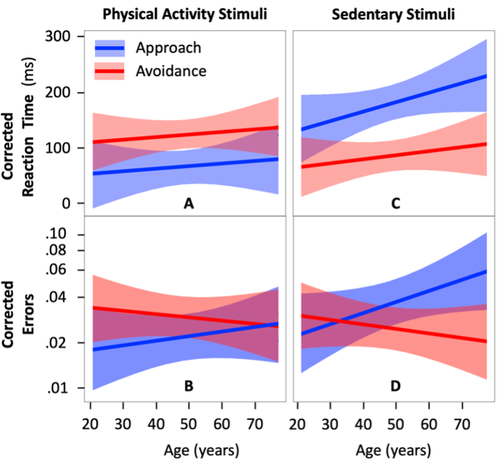
LEBON Florent
- INSERM U1093 CAPS Laboratory, Université de Bourgogne Franche-Comté, Dijon, France
- Behavioral/Cognitive Neuroscience, Humans, Plasticity
- recommender, manager, administrator
Recommendation: 1
Reviews: 0
Recommendation: 1

Automatic approach-avoidance tendency toward physical activity, sedentary, and neutral stimuli as a function of age, explicit affective attitude, and intention to be active
Relationship between age and physical and sedentary stimuli.
Recommended by Florent Lebon based on reviews by Lilian Fautrelle and 1 anonymous reviewerUp to now, the automatic approach-avoidance tendency towards physical activity and sedentary stimuli has been studied in various categories of the population. Previous studies showed faster reaction times (RTs) when approaching physical activity stimuli and avoiding sedentary stimuli, especially in healthy young individuals (Cheval et al., 2014; Locke & Berry, 2021). However, the whole spectrum of adulthood has never been tested within the same experiment.
A first strength of the study of Farajzadeh et al. (2023) is that they constructed an online paradigm and analyzed the results of 130 participants aged between 21 and 77 years. It should be noted that this study has been pre-registered (https://doi.org/10.17605/OSF.IO/7GXZR). Overall the authors performed the experiment as first described. They updated their a priori power analysis, including the highest number of predictors (six tested predictors including two interaction effects and a total of eleven predictors). This increased the planned number of participants recruited from 85 to 144. Also, in addition to planned hypotheses, exploratory analyses were conducted to test whether automatic approach-avoidance tendencies toward physical activity and sedentary behaviors were associated with explicit attitudes and the intention to be physically active across aging.
The authors recorded RTs and errors when participants had to approach/move an avatar towards/away from physical activity and sedentary stimuli.
Another strength lies in data analysis and statistical design. To avoid any misinterpretation of the results, which could arise from an increase in RTs relative to age, the authors had the foresight to measure RTs when approaching/avoiding neutral stimuli (ellipses and rectangles).
Taking into account such individuals differences, Farajzadeh et al. confirmed a main tendency to approach physical activity stimuli and to avoid sedentary stimuli throughout the lifespan.
When the participants considered physical activity as the most pleasant and enjoyable (explicit affective attitude toward physical activity), the RTs were shorter when approaching physical activity and avoiding sedentary stimuli, irrespective of age. However, the intention to be physically active did not influence the individual's RTs.
Altogether, the study by Farajzadeh et al. suggests that age and explicit attitudes modulate the time to respond to physical activity and sedentary stimuli.
References
Cheval, B., Sarrazin, P., and Pelletier, L. (2014). Impulsive approach tendencies toward physical activity and sedentary behaviors, but not reflective intentions, prospectively predict non-exercise activity thermogenesis. PLoS One, 9(12), e115238. https://doi.org/10.1371/journal.pone.0115238
Farajzadeh, A., Goubran, M., Beehler, A., Cherkawi, N., Morrison, P., de Chanaleilles, M., Maltagliati, S., Cheval, B., Miller, M.W., Sheehy, L., Bilodeau, M., Orsholits, D., and Boisgontier, M.P. (2023) Automatic approach-avoidance tendency toward physical activity, sedentary, and neutral stimuli as a function of age, explicit affective attitude, and intention to be active. MedRxiv. https://doi.org/10.1101/2022.09.05.22279509
Locke, S. R., and Berry, T. R. (2021). Examining the relationship between exercise-related cognitive errors, exercise schema, and implicit associations. Journal of Sport and Exercise Psychology, 43(4), 345–352. https://doi.org/10.1123/jsep.2021-0031